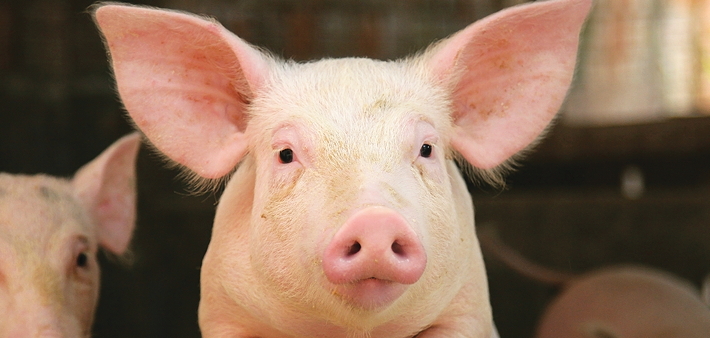Trouw Nutrition GB’s pig technical manager, Dr Sian Nichols, discusses new tools from the company to aid efficient pig production
The only certainty for many pig producers at the moment is uncertainty; be it pig price, feed volatility, pressure on use of medication or Brexit, there are ever-increasing challenges that make profitability a battle. UK producers have done an excellent job in the past few years in improving herd performance, with advances in nutrition playing a key role, however we face an ever-moving target as genetics continue to change and improve, meaning the pig we’re feeding is constantly evolving.
Precision nutrition is not a new concept – it makes sense that the more precisely we meet the pig’s nutrient requirements then the better it will perform. An added consideration is the sustainability aspect – minimising nutrient wastage isn’t only better for the pig, it’s better for the environment and the producer’s bank balance – what’s not to like?
Sounds simple, but the limiting factor is all too often an incomplete understanding of on-farm KPIs. If we don’t fully understand current pig performance and have an accurate knowledge of what they’re eating, then we’ve no reference point from which to improve. This knowledge extends beyond performance measures; those home mixing to any degree should have an appropriate quality control programme in place to monitor feed material quality.

The variation in cereal nutrient levels can be huge, and the impact on pig performance considerable – unsurprising when cereals can form up to 80% of a diet! NIR analysis is a rapid and economical method of analysing a broad range of feed materials to give a full nutrient profile, and forms the basis of the Trouw Nutrition CerealWatch grain monitoring programme, which will be running once again for the 2016 harvest.
The aim of CerealWatch is to monitor grain nutritional quality throughout the harvest period and beyond, analysing variation and regional trends to ensure that the most accurate nutrient values are used when formulating pig diets. Previous harvests have shown big differences in nutritional value of grain, even coming from the same farm, so continuous monitoring is essential for maximum benefit.
Table 1 shows the impact of variable wheat energy levels on performance and economics. Although it shows the extremes, I think it nicely demonstrates how unknowingly feeding below-spec cereals can hugely affect profitability. Regular cereal analysis allows appropriate reformulation to prevent any negative impact.
When feed prices are volatile, or, in some situations, when supply is variable, how do you make decisions on feed and feeding schemes that make the greatest economic sense?
The focus is usually on feed cost, that is minimising it, and that would seem sensible given that feed represents up to 70% of production costs. However, what we should really be focusing on is maximising margin over feed cost, and the best feed to do this is more than likely not going to be the cheapest feed. The ability to rapidly compare and evaluate different feeds and feeding schemes in a unit-specific situation is invaluable, and this is where the NutriOpt Swine model, developed by Trouw Nutrition, comes in to its own.
The NutriOpt model is essentially a powerful decision-making tool. Once a unit and its genetics have been characterised, we can use it to rapidly and accurately compute how the pigs will respond to a huge range of dietary and management changes – without having to go through the lengthy process of farm trials. The model is unique in a number of ways; it’s the result of years of research, and has been used extensively in Canada and Europe for a number of years with excellent accuracy.
There are many other factors that can often have a significant impact on performance and profitability, but which can be easily overlooked. These include optimal feeder space, stocking density and environmental temperature to name but a few. Health has a huge impact and investment in nutritional programmes to optimise gut health pays back heavily.
The diagnostic feature of the NutriOpt model allows a rapid assessment of key factors limiting herd performance, which helps to immediately focus in on the correct areas for improvement. An optimiser function allows the prediction of the optimum nutritional solution to improve performance or profit. The model also offers the ability to evaluate the environmental impact of production, and has a tool to analyse and optimise the most efficient pattern for pulling slaughter pigs on a given contract.
Once again, knowledge is power, and optimising profitability requires a thorough understanding of herd performance. A small time investment in accurate recording and analysis will ultimately pay huge dividends in the long run!
To learn more about the full NutriOpt programme, email Dr Sian Nichols at: sian.nichols@trouwnutrition.com






